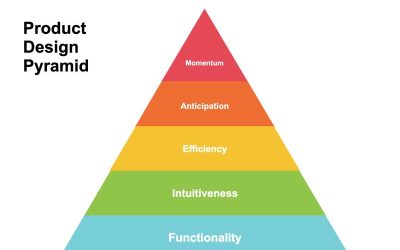You probably already know roughly what haiku is — a Japanese form of poetry that roughly follows a pattern of 5-7-5 syllables (or, more technically, morae) — but you might not be aware of some of the more subtle constraints of this exceptionally restrained style of poetry.
Five syllables here
Seven more syllables there
Are you happy now?
(anonymous fourth grade student)
For example, a fundamental characteristic of haiku is the kiru (cutting) that divides the poem into two distinctive but interconnected images or concepts. Also, each haiku has a kigo (season word) that defines the season in which the poem is set. These seasonal words typically come from a saijiki (a categorized list of seasonal terms) along with example haiku, compiled for the purpose of providing poetic inspiration.
All in all, given its compact space, haiku has a surprising number of conventions and constraints dictating its form, which has remained largely intact for centuries.
From time to time
The clouds give rest
To the moon-beholders.
(Basho, 1644-1694)
(Don’t worry about counting syllables in translated haiku, by the way. Translations work better when focused on sentiment over structure, and even haiku written in English tend to be less preoccupied with syllable count than the overall spirit of kiru, kigo, and the general short-long-short structure.)
Because the specific concepts that evoke a certain season will vary widely depending on one’s location, every region has its own set of saijiki. (An Australian saijiki, for example, includes summer concepts like bees, Christmas, cockatoos, cyclones, and jellyfish.)
Feeling the deepness
Of the wave you are riding,
The spray in your eyes
(Eliza Shaw, age 10)
It would be easy for an aspiring poet to feel stifled by all these constraints. “Too many rules,” they might say. “I don’t want to be locked down. I want to be creative and free!”
However, the haiku form provides tremendous surprise and variety despite its extreme constraints, and it has been used to remarkable effect for centuries. Far from being oppressed by the form, many master poets have adopted it as a powerful framework for the creation of stirring, insightful, and inspiring works that stand the test of time.
Is creative freedom really the goal?
Designers, especially American designers, can quickly become frustrated with constraints. We idolize the rule breakers, the innovators, and those who abandon all constraints in pursuit of the fantastic. We take as our heroes those who defy social norms and discard conventions in favor of new, liberated ways of doing things. We need that kind of innovation and reinvention in order to occasionally purge the obsolete and replace it with the new and improved.
The old pond;
A frog jumps in —
The sound of the water.
(Basho, 1644-1694)
As with most things, however, the far extremes seldom hold the right answers. The pursuit of creative freedom is a powerful thing, but it works best when balanced on the other hand with a considered appreciation for established-but-effective design patterns and real-world project constraints. The designer who can look into both worlds without fear will always outperform the designer who’s running away from one of them toward the other.
This is a particular problem in the United States, which holds the dubious distinction of being the world’s most individualistic nation. As an obsessive cultural norm, we care first and foremost about ourselves and our own desires, preferences, and whims. (There’s a reason that the single word with which Americans most identify is ”freedom.“) Because of this, our default tendency as American designers is to resent our clients and their customers because they “get in the way of our creative freedom.”
That wren–
looking here, looking there.
You lose something?
(Issa, 1763-1828)
The more I learn about effective design (and effective design teams), however, the more I find myself valuing those same constraints so many designers chafe against. If our team gets a project with a narrow budget, limited timeline, strict brand constraints, or severe technical limitations, I don’t find myself feeling disappointed. Instead, more often than not, I’m a little excited about the opportunity to see what we can do with it.
I already know we can do great work if we’re given six figures and twelve months—I mean, really, who couldn’t?—but sometimes I want to see what we could accomplish in a week, or with a 12-hour budget. Are we still any good within those constraints? Can we still provide value? After all, it doesn’t say much about us if we can only do good work with huge budgets and luxurious timeframes.
The taste
of rain
—Why kneel?
(Jack Kerouac, 1922-1969)
Design is a lot like haiku. The constraints can be difficult, but embracing instead of rejecting them can lead to powerful results. I believe the greatest designers are those who can move past the natural but superficial desire for a complete lack of constraints, and instead embrace the job they’re being asked to do and the real world in which they’re being asked to do it.
Haiku in motion: the Volkswagen story
In 1931, a man named Ferdinand Porsche created a company that specialized in consulting and development for motor vehicles. At the time, though, Germany was in the middle of an extreme financial crisis, with unemployment reaching more than 30%. Most Germans could barely afford a motorcycle, let alone a car.
In 1933, the newly-elected chancellor of Germany, Adolf Hitler, wanted to make sure that Germans had the same access to automobiles that Americans did. He challenged German car designers to come up with a vehicle that would transport a family of two adults and three children at a speed of at least 60 miles per hour—and it had to cost about the same as a motorcycle.
Instead of giving up or griping about the client’s budget, time constraints, or unrealistic demands, Porsche went to work. Several companies competed to solve the problem, but in the end, his company triumphed with an unusual prototype, a car we eventually came to know as the Volkswagen Beetle.
The motor car is truly launched:
Four martyrs’ heads
Roll under the wheels.
(Paul Éluard, 1895-1952)
The last Volkswagen Beetle, which remained essentially the same car that Porsche originally designed, came off the assembly line in 2003. The model had been in production for 65 years, during which more than 21 million had been produced.
When you feel frustrated with your own stakeholders, it’s worth remembering that Ferdinand Porsche’s client was literally Hitler and he still managed to design the most successful car in history.
The fear of the opposite extreme
One of the key factors that makes it difficult for people to back off from one extreme (such as the relentless pursuit of creative freedom) is the fear that moving toward the middle is the same as going toward the other extreme. You see this effect often in politics, where candidates find themselves constantly being pushed out to the extremes, because any compromise will be seen as them being like the enemy.
I’m proposing here that designers would benefit from backing off of the constant pursuit of total creative freedom (and the negativity that comes from not getting it), and instead embrace the constraints of their projects as a natural, healthy, and even inspiring challenge.
Naturally, some will take this as me saying that designers should just sell out, do whatever the client wants, stop trying, give up on innovation, and so on. They see the darkness at the other extreme of that spectrum, and assume that any motion toward it will result in them going there. (It would be like someone from the Arctic being afraid my suggestion they relocate further south would mean they’d have to go to Antarctica, when really I’m suggesting the delightful tropical areas in between.)
The first firefly…
But he got away and I…
Air in my fingers.
(Issa, 1763-1828)
Just to be clear, I’m not at all against creative freedom. I love it just as others do (and should). I just think it’s healthy to love project constraints as well. When you balance the two, you can do some really spectacular things.
Great design is built around constraints
If you look behind any truly brilliant design solution, you’ll inevitably find some serious constraints. That’s because design is fundamentally about solving the problem in front of you. Not a different problem, not an easier problem, not a more comfortable problem, but the problem in front of you.
I recall a project where we had to design product packaging that would appear on shelves in Walmart, a company notorious for their rigorous optimization. The expansive, refreshing packaging we’d designed as a first draft looked beautiful, and anyone who saw it would have patted us on the back and told us what great designers we were. Unfortunately, it totally failed in the real world, because the packaging was too expensive, and it took up too much shelf space. (Is it still great design if it fails to solve the problem? Personally, I don’t believe so.)
Future versions of the packaging were perhaps a little less glorious to behold, but they addressed the real-world problems we were hired to solve. They fit the budget, they included all the needed information (including bilingual translations of all text), they used lower-cost materials, and it reduced the overall shelf space required. I found I was more proud of our work on that project because of the constraints than if we hadn’t had them.
How that butterfly’ll wake up.
When someone.
Bongs that bell!
(Jack Kerouac)
The haiku form is one of the most limiting in all of literature, and yet for centuries it has been a source of fascinating, exhilarating, and surprising innovation. Far from being an oppressive poetic prison, it has served as a framework that sharpens the mind and focuses intent, allowing authors to create incredible scenes in just a few words.
As designers, we’d all do well to think about haiku the next time we find ourselves grumbling about a client’s lack of budget, an overly-quick deadline, or a limiting technical or business requirement. Instead of fearing or resenting the constraints, there may be something to be said for embracing them enthusiastically and figuring out what you can do with them. You may wind up moving past “just another project” into potentially doing some of the best work of your entire career.




